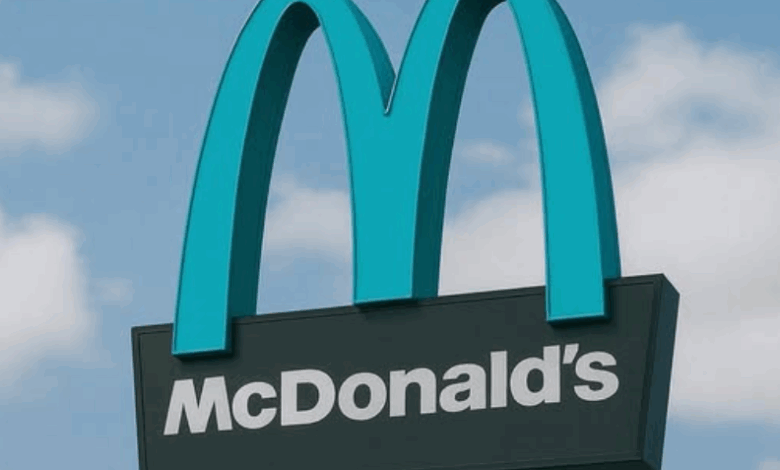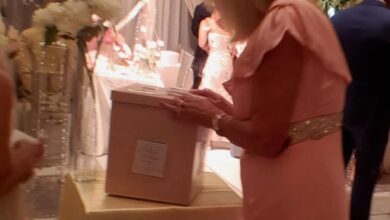
Why One McDonalds Has Turquoise Arches!
If you ever find yourself driving through Sedona, Arizona, a small desert city surrounded by majestic red rock formations, you might double-take when you spot the McDonald’s. Something about it feels different — familiar, yet slightly off. Then it hits you. The arches aren’t gold. They’re turquoise.
It’s the only McDonald’s in the world with arches that color — and it’s not a marketing stunt. It’s a story about place, preservation, and the quiet ways a community can hold on to its identity.
A Town Like No Other
Sedona isn’t a typical town, and that’s exactly the point. Nestled between crimson cliffs and ancient sandstone towers, it’s a place that draws people for its natural beauty, spiritual energy, and striking harmony between human life and landscape. Even before it became a tourist destination, Sedona was known for its deep respect for nature. The city’s building codes reflect that philosophy — strict rules ensure that nothing built here overshadows the landscape that defines it.
So when McDonald’s decided to open a restaurant in Sedona back in 1993, the company found itself up against something it rarely encountered: a community unwilling to compromise its aesthetic for a global brand.
The Color Problem
The conflict started with color. The famous “Golden Arches” are one of the most recognizable symbols in the world — bright, loud, and impossible to miss. But city planners in Sedona saw a problem. The iconic yellow would clash dramatically with the surrounding scenery: the deep, rust-colored rocks and soft desert palette that make the city one of the most photographed places in the American Southwest.
Sedona’s architectural guidelines required all commercial buildings to blend into the environment, using natural tones and subdued designs. A golden “M,” glowing against the muted desert backdrop, was out of the question.
McDonald’s executives initially resisted the idea. After all, the arches weren’t just decoration; they were the company’s identity. To change them seemed unthinkable. But Sedona’s officials held firm — if McDonald’s wanted to be part of Sedona, it would have to play by Sedona’s rules.
The Compromise
After weeks of negotiation and discussion, a creative solution emerged. What if the arches weren’t golden, but turquoise? The color, inspired by the gemstone long revered in Native American culture, would harmonize with Sedona’s landscape while maintaining a distinctive charm.
Turquoise, after all, carries its own symbolism. It’s a color tied to protection, healing, and connection to the natural world. In the arid Southwest, it represents the sky reflected in desert stone — a perfect match for Sedona’s spiritual and visual aesthetic.
McDonald’s agreed. When the restaurant opened later that year, locals were pleasantly surprised. The turquoise arches didn’t feel like an intrusion. They felt like they belonged.
A Symbol Reimagined
The change turned out to be more than just a design decision. It became a statement — a small but powerful example of how global corporations can adapt to local culture rather than overwrite it.
For Sedona, it was a victory of identity. For McDonald’s, it became an unlikely lesson in harmony and flexibility. Tourists visiting the city began to take notice. The turquoise arches, contrasting softly against the terracotta cliffs, became a must-see landmark in their own right.
Today, visitors often stop just to take photos of the sign — some without even ordering a meal. The restaurant itself looks nothing like a typical fast-food outlet: earth-toned stucco walls, low-slung architecture, and desert landscaping designed to complement the surroundings rather than compete with them.
Inside, it’s much like any McDonald’s — but outside, it’s something else entirely: a piece of global branding shaped by local values.
More Than Just a Color
The turquoise arches also tell a deeper story about Sedona’s commitment to preservation. The city’s guidelines extend far beyond McDonald’s — from fast-food chains to gas stations to hotels, every building is expected to respect the landscape. Signs must be low to the ground, lighting must remain subdued, and colors must mirror the natural hues of the surrounding terrain.
The philosophy is simple: in Sedona, nature leads, and humanity follows. That’s part of what makes the city so striking. Even as tourism has boomed — millions of visitors come each year to hike, meditate, or simply take in the view — Sedona has managed to hold onto its sense of calm and authenticity.
The turquoise McDonald’s fits perfectly into that vision. It’s a reminder that even the most recognizable global icons can adapt when a community stands firm in protecting its essence.
A Landmark of a Different Kind
Over the years, the turquoise arches have taken on a life of their own. They appear in travel blogs, postcards, and even art prints. Couples stop there on road trips for pictures, and travel guides list it as a “quirky must-see.” For many, it’s a symbol of Sedona’s individuality — proof that even a multinational corporation can be reshaped by the spirit of a place.
Locals often point out that the restaurant’s unusual design has actually enhanced its charm. “It’s funny,” one longtime resident said. “When you see it, you still know it’s McDonald’s. But it feels like Sedona’s McDonald’s — not just another copy of the same thing.”
That sense of ownership reflects something larger: a community’s right to define its own aesthetic. In a world where sameness often feels inevitable, Sedona quietly reminds the rest of us that we don’t have to surrender uniqueness to progress.
Lessons in Turquoise
The story of the turquoise arches might seem small — a simple design change in a single fast-food restaurant. But it carries meaning well beyond color. It’s about compromise, respect, and the ability of a global brand to listen rather than impose.
Sedona’s approach challenges the idea that economic growth and environmental integrity can’t coexist. It shows that preserving beauty and character doesn’t mean rejecting change — it means shaping it thoughtfully.
Today, as more towns grapple with overdevelopment and visual pollution, Sedona’s turquoise arches stand as a subtle model for balance. They remind us that a city’s soul is worth protecting — and that even something as ordinary as a drive-thru can honor the extraordinary land it stands on.
The Color That Became a Legacy
More than thirty years after its construction, the turquoise McDonald’s remains one of Sedona’s most photographed landmarks. Tourists still marvel at the contrast between the gentle teal glow of the arches and the fiery cliffs behind them. McDonald’s executives have acknowledged its fame, and it’s become a favorite example in design and marketing circles of “branding with local sensitivity.”
It’s also a quiet symbol of Sedona itself — resilient, creative, and unwavering in its dedication to harmony.
So, when you pass through Sedona and spot those turquoise arches glinting under the desert sun, know that you’re looking at more than a fast-food restaurant. You’re seeing a rare partnership between commerce and conscience, between a company that learned to bend and a town that refused to.
And maybe, just maybe, that shade of blue-green isn’t just paint. It’s a reminder that beauty isn’t something we build over nature — it’s something we build with it.




